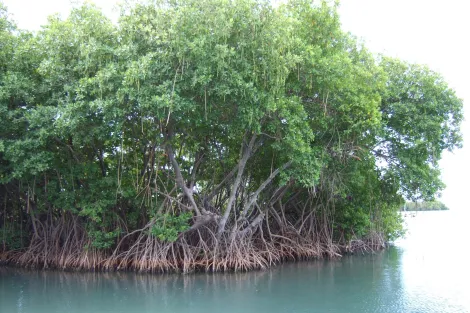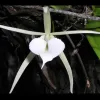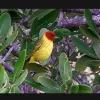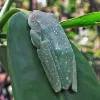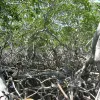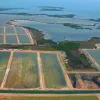This view of mangrove roots above the water misses a lot of the action. The roots extend far below the water’s surface, anchoring the forest to the sea and providing a tangled habitat for a variety of marine organisms. These mangroves are in Salinas, Puerto Rico. Other types of mangrove trees have roots that point upward from the mud surface and bring oxygen to the roots.
Mangroves: Photos of Plants and Animals
Mangrove is the name for a tree—and also for a complex ecosystem—that bridges land and sea. There are around 70 species of mangrove trees (meaning trees that can grow in salty water and soils), but they are not all closely related. The ability to live in a swampy, salty habitat evolved many times over millions of years resulting in a wide diversity of mangrove trees.
What do they have in common? Mangrove trees have unique adaptations to survive salt water, and their roots provide structure and habitat for organisms to grow upon and hide behind. With plentiful tiny food, mangroves are important nurseries for fish we like to eat. Up in their branches, unique tropical organisms thrive, some able to bridge the land-sea gap and others that never enter the sea. And once they die, mangrove leaves and branches are broken down and eaten by another set of organisms, many of them microscopic.
These ecosystems not only provide homes to many species, they also take carbon dioxide from the atmosphere and store it, helping to reduce global warming and ocean acidification. Their numerous sturdy trunks protect coastal cities and towns from flooding during storms. It is estimated that a single hectare of mangrove can be worth $20,000 a year (or $8,100 per acre) in contributions to fisheries and coastal protection. Learn more about mangrove ecosystems.
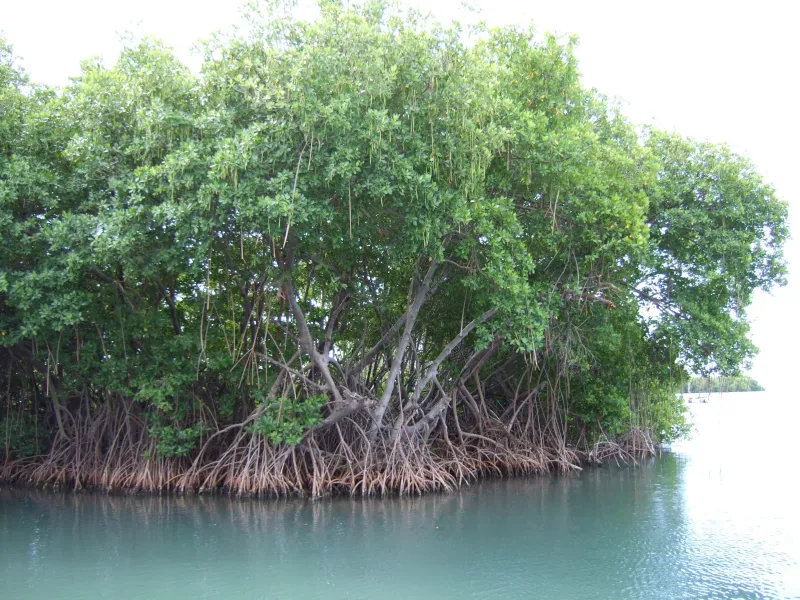
Mangrove Roots Above Water
Credit: Boricuaeddie via Wikimedia Commons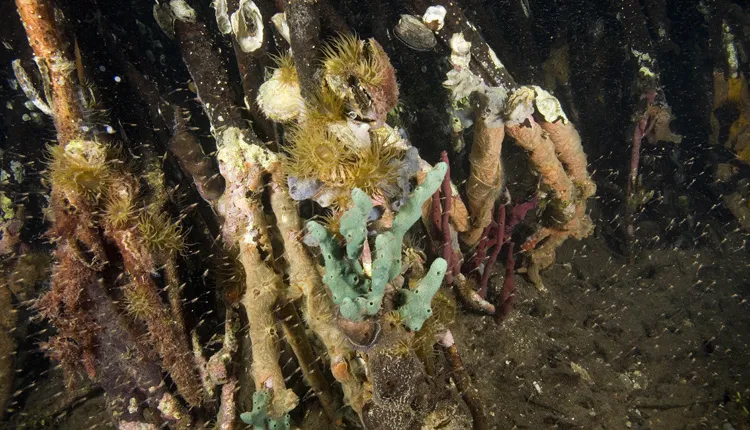
Mangrove Roots Up Close
Credit: Chip Clark/Smithsonian InstitutionDip your head below the water's surface in a mangrove forest and an entirely new ecosystem is revealed. The twisting mangrove roots, some of which don’t make it to the seafloor, support a great diversity of life—including sponges, sea anemones, brittle stars, and sea urchins. The roots also serve as a nursery area for fishes and other organisms: the dense roots provide hiding places for young fish, and the roots and organisms living upon them provide nutrients and particulate food.
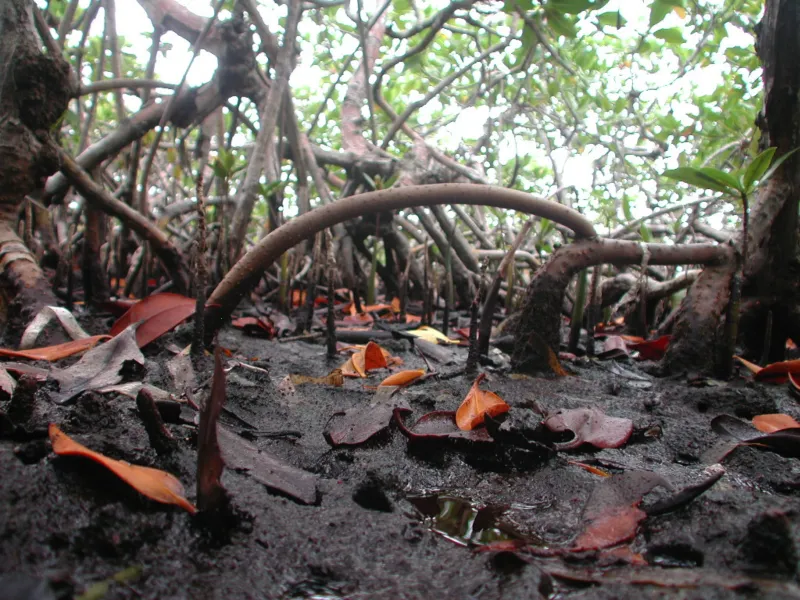
Mangroves Protect Against Erosion
Credit: Courtesy of Karen McKee/The Wetland Foundation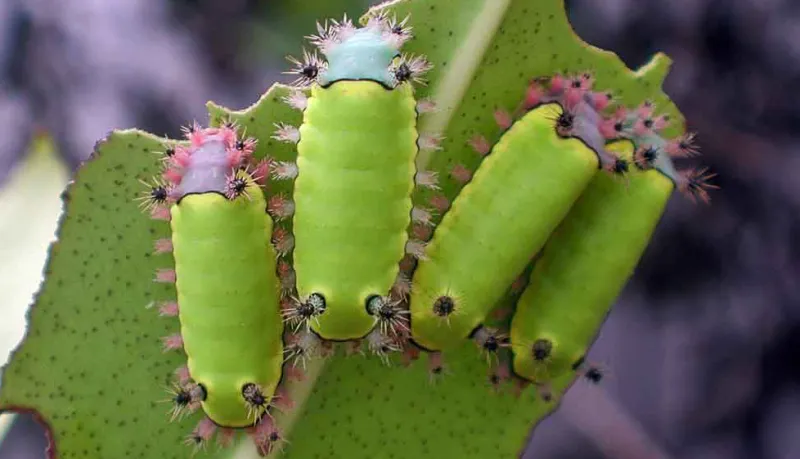
Slug Caterpillar
Credit: Smithsonian InstitutionThis slug caterpillar (Acharia horrida), which will eventually metamorphosize into a very plain brown moth, has stinging spines that are very nasty to rub up against. Although the slug caterpillar family occurs worldwide, this species is found only in the tropics.
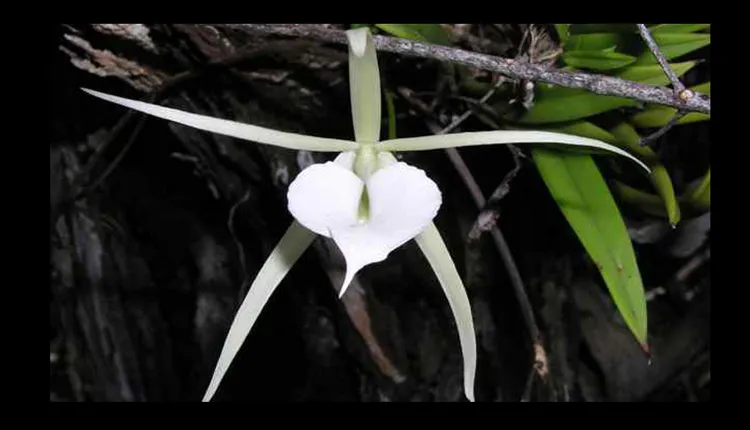
Mangrove Orchid
Credit: D. Scott Taylor, Brevard County Environmentally Endangered Lands Program, Melbourne, FL,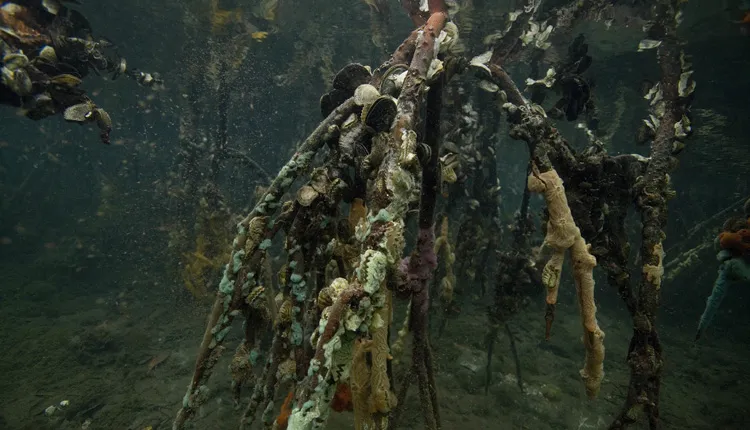
Mangrove Roots Flush with Life
Credit: Chip Clark/Smithsonian Institution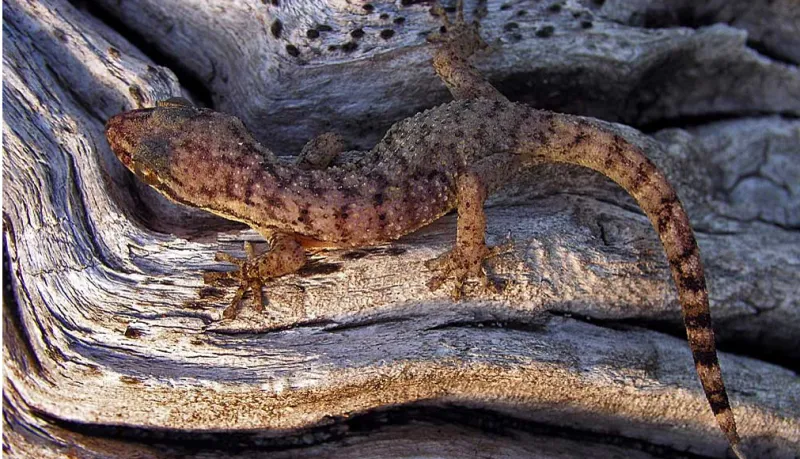
Island Leaf-Toed Gecko
Credit: Smithsonian Environmental Research CenterThe Island Leaf-Toed Gecko (Phyllodactylus insularis) is one of several species of geckos that live in the mangroves of the Belize’s Mangal Cay.
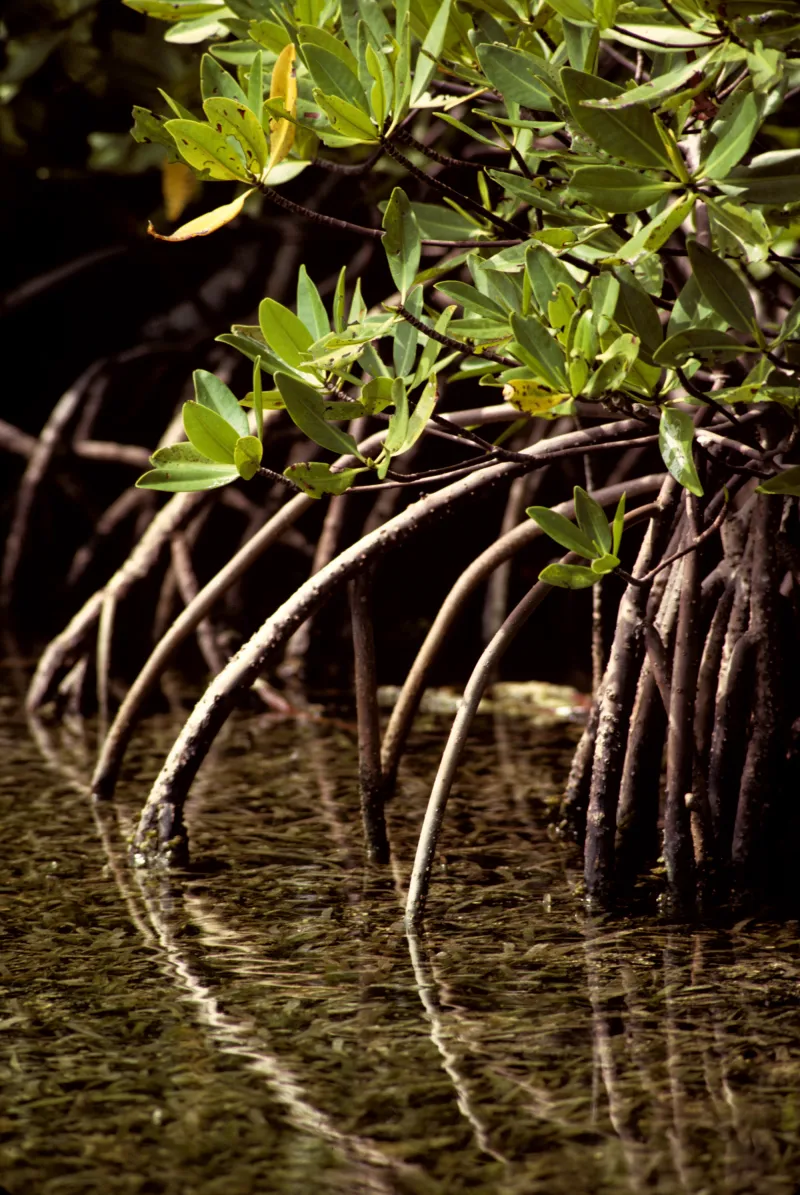
Mangrove Support System
Credit: Chip Clark/Smithsonian InstitutionArching mangrove roots like these help keep trunks upright in the soft sediments at water’s edge. More about mangroves can be found in our Mangroves featured story.
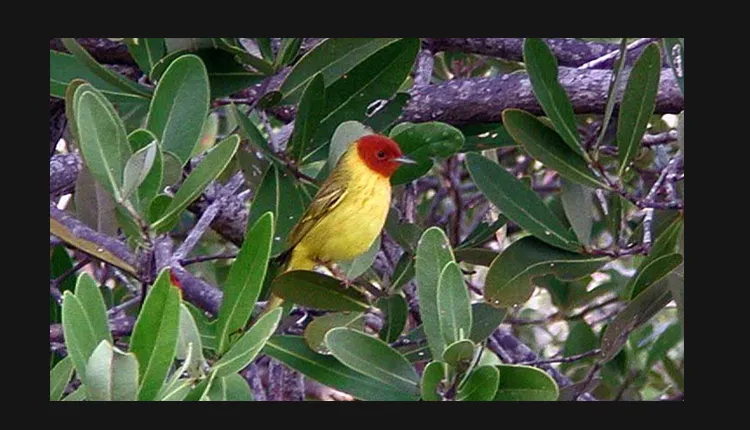
Mangrove Yellow Warbler
Credit: Smithsonian InstitutionMangroves canopies support an amazing array of life—including this mangrove yellow warbler (Dendroica petechia bryanti), the most common songbird in the mangroves of the Caribbean’s Mangal Cay.
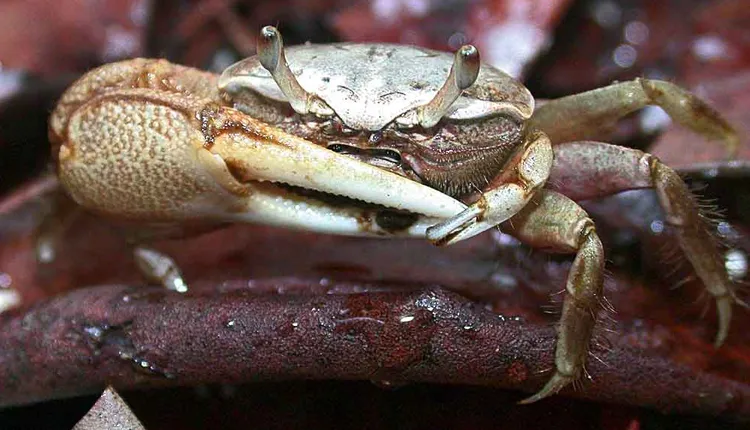
The Mudflat Fiddler Crab
Credit: Steven Paton/Smithsonian Tropical Research InstituteA male mudflat fiddler crab (Uca rapax) waves its huge claw to impress females and threaten competitors. Only the males have the large claw. When the tide is high, fiddler crabs retreat to their burrows.
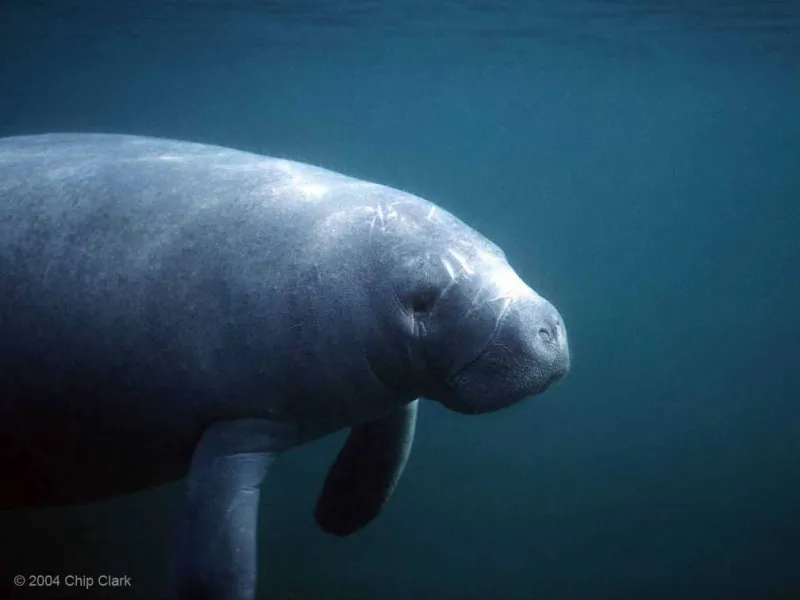
West Indian Manatee Portrait
Credit: © 2004 Smithsonian InstitutionWest Indian Manatees (Trichechus manatus) are found in warm, shallow coastal ecosystems along the southeastern North America and northeastern South America. They graze plants in mangrove ecosystems and seagrass beds, occasionally eating small fish or invertebrates. However, they are sensitive to changes in their environment, such as cool water temperatures and harmful algal blooms, along with human threats such as speedboats, hunting, and accidental harm from fishing.
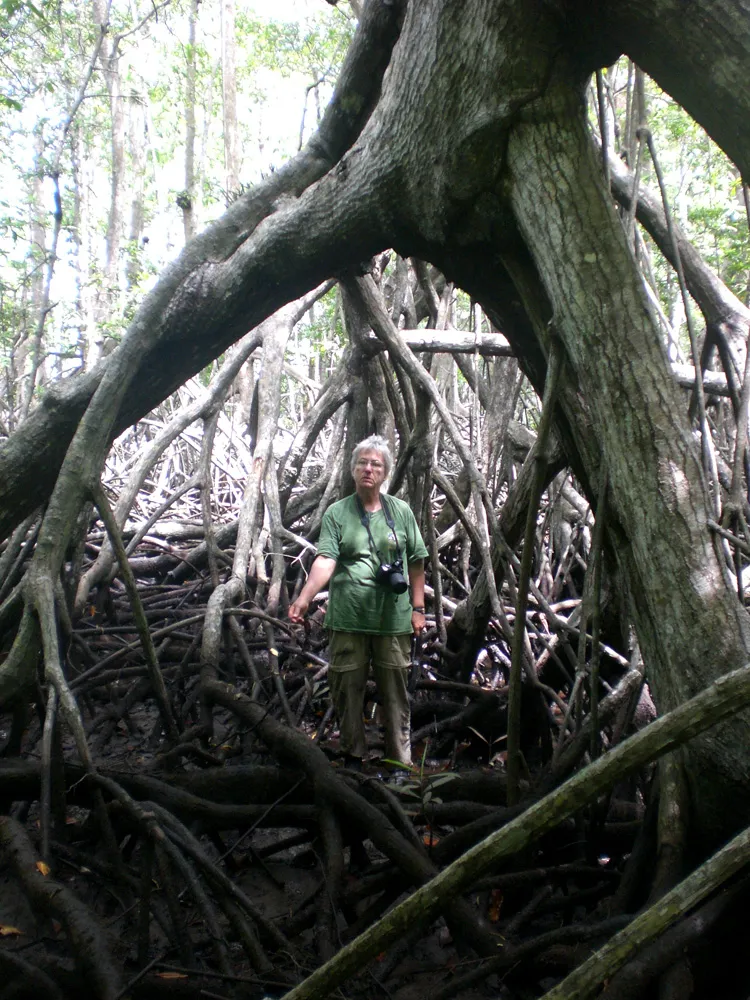
Dr. Candy Feller with Mangrove Roots
Credit: Anne Chamberlain/Smithsonian Institution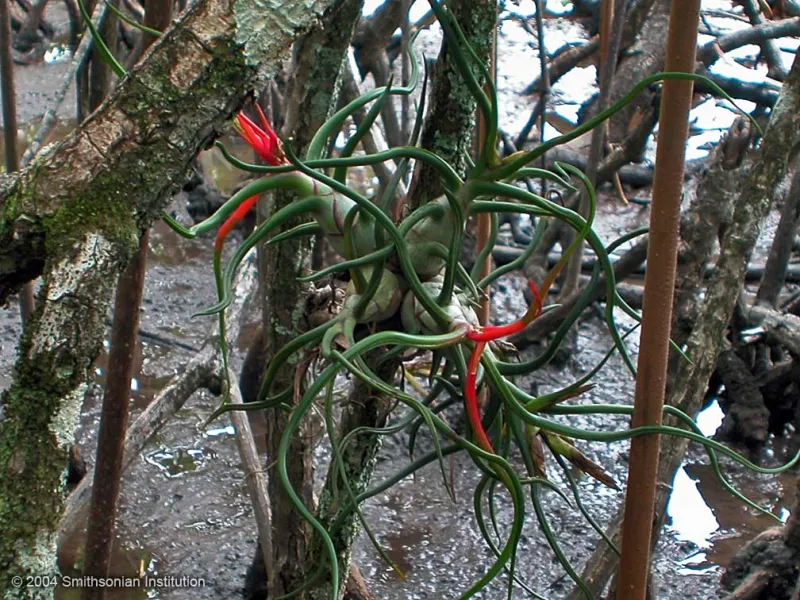
Dancing Bulb
Credit: © 2004 Smithsonian Institution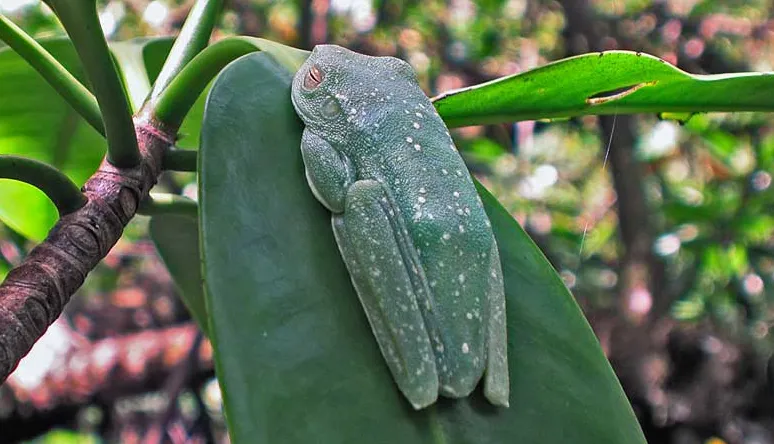
Tree Frog
Credit: Smithsonian InstitutionFlattened against a leaf, a tree frog blends right in with the mangroves. More about mangroves can be found in our Mangroves featured story.
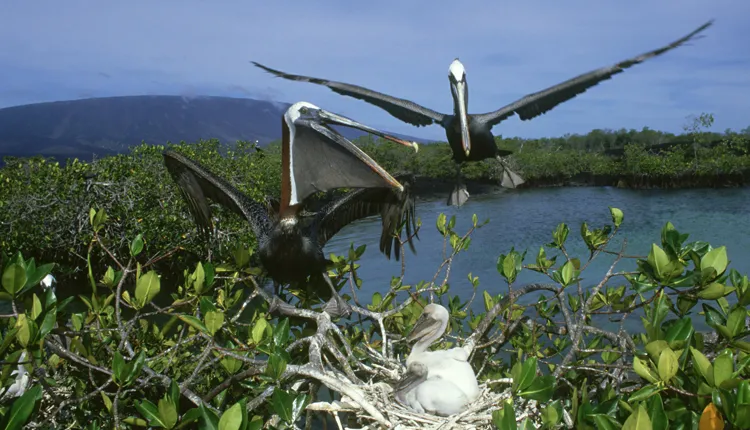
Pelican Nest in Mangroves
Credit: Mark JonesIn Ecuador’s Galapagos Islands, brown pelicans (Pelecanus occidentalis) nest at the top of a mangrove tree. Many other kinds of birds—as well as insects, frogs, snakes, and lizards—live in the canopy of mangroves.

Mangrove Survival: Against the Odds
Credit: Matthew D Potenski, MDP Photography/Marine Photobank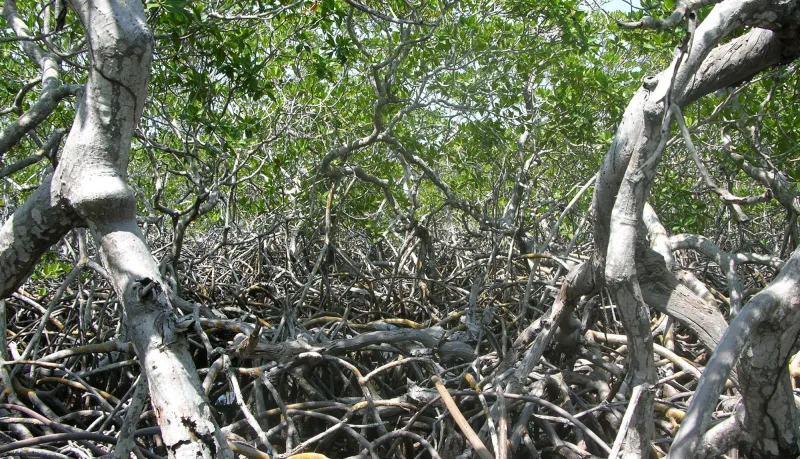
Mangrove Roots in Belize
Credit: Courtesy of Karen McKee/The Wetland FoundationThe dense aerial root system of this mangrove forest in Pelican Cays, Belize, creates a strong but permeable barrier to waves and currents. More about mangroves can be found in our Mangroves featured story.
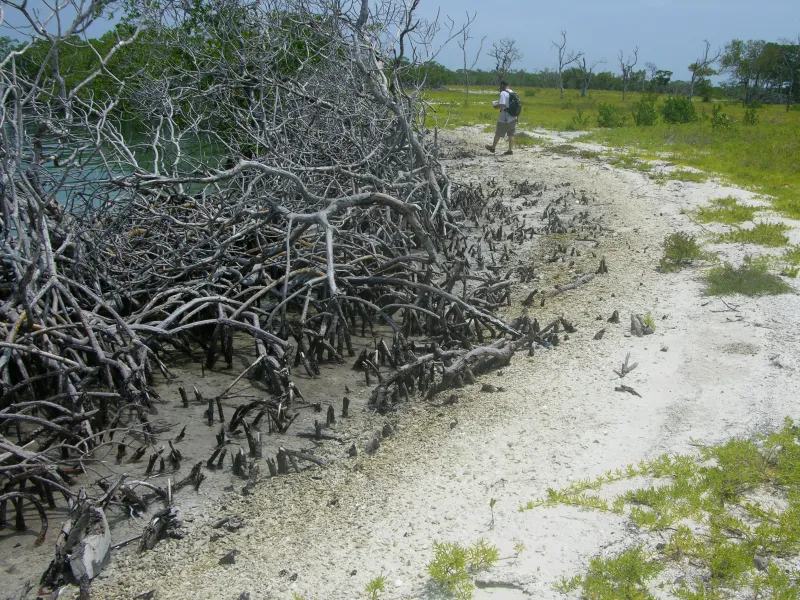
Dredge Material Kills Mangroves
Credit: Courtesy of Karen McKee/The Wetland FoundationFringing mangroves in the Pelican Cays, Belize, were killed by dredge material that overflowed and smothered the aerial roots of trees along the shoreline. More about mangroves can be found in our Mangroves featured story.

Former Mangrove Forest
Credit: Ilka C. Feller/Smithsonian Institution, made possible by LightHawkThis shrimp farm in southern Belize is just one example of how mangroves worldwide are giving way to human development. In just the last decade, at least 35 percent of the world's mangroves have been destroyed. More about mangroves can be found in our Mangroves featured story.
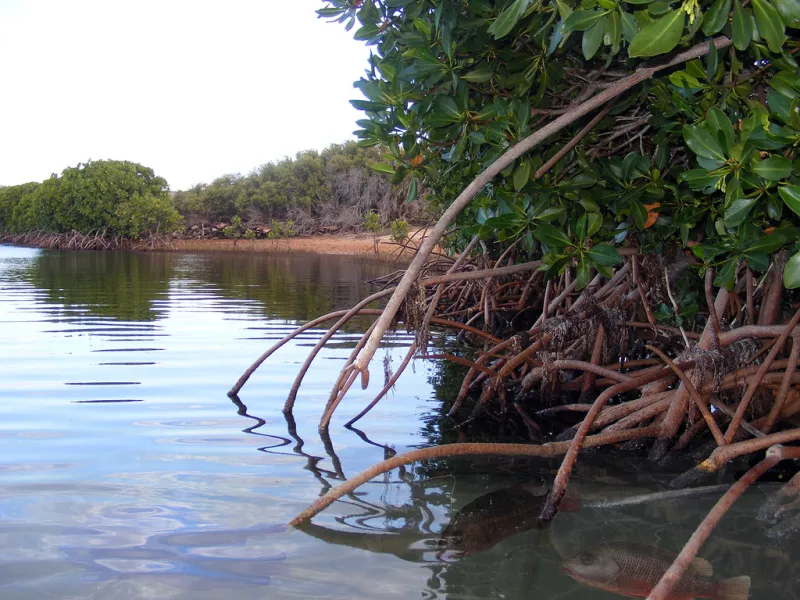
Blue Carbon
Credit: Flickr user Bill & Mark Bell
Former Mangrove Forest
Credit: Ilka C. Feller/Smithsonian Institution, made possible by LightHawkThis shrimp farm in southern Belize is just one example of how mangroves worldwide are giving way to human development. In just the last decade, at least 35 percent of the world's mangroves have been destroyed. More about mangroves can be found in our Mangroves featured story.

Blue Carbon
Credit: Flickr user Bill & Mark BellWhat is blue carbon? It's a term used to describe the carbon that is captured from the atmosphere by ocean ecosystems, mainly coastal mangroves, seagrasses and salt marshes. These coastal areas can hold up to five times more carbon than tropical forests, which means they play an important role in both removing excess carbon from the atmosphere and storing that carbon for the long haul. Destruction of these ecosystems releases the stored carbon, in addition to removing important wave protection and fish nursery grounds.

Former Mangrove Forest
Credit: Ilka C. Feller/Smithsonian Institution, made possible by LightHawkThis shrimp farm in southern Belize is just one example of how mangroves worldwide are giving way to human development. In just the last decade, at least 35 percent of the world's mangroves have been destroyed. More about mangroves can be found in our Mangroves featured story.

Blue Carbon
Credit: Flickr user Bill & Mark BellWhat is blue carbon? It's a term used to describe the carbon that is captured from the atmosphere by ocean ecosystems, mainly coastal mangroves, seagrasses and salt marshes. These coastal areas can hold up to five times more carbon than tropical forests, which means they play an important role in both removing excess carbon from the atmosphere and storing that carbon for the long haul. Destruction of these ecosystems releases the stored carbon, in addition to removing important wave protection and fish nursery grounds.


